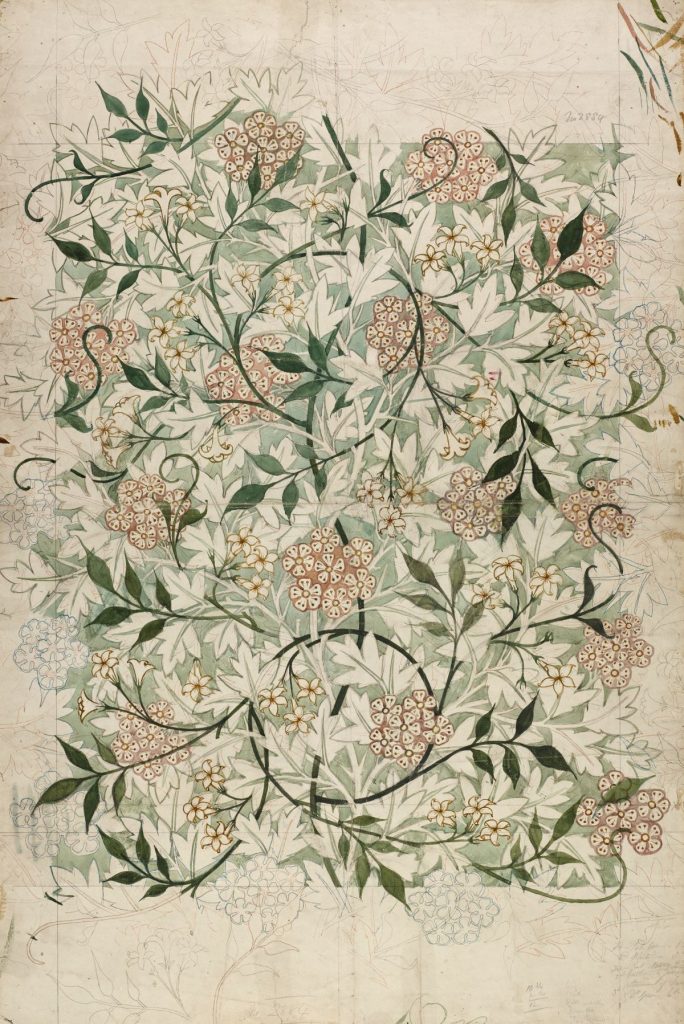How Did The Arts & Crafts Movement Inspire and Change Furniture Design?
How it began
The Arts and Crafts movement began as a reaction to the industrial revolution. With the introduction of machinery, large companies began mass-producing what was before a skilled and hand-made art form. This included the making of furniture.
In the late 19th century people began to acknowledge and oppose the damaging effects of this industrialisation – criticising both the social conditions as well as the decline in quality and standard of these manufactured goods.
The Arts and Crafts Movement, as a whole, was a celebration of the hand-made and many were concerned for the loss of traditional skills. William Morris was a huge influence within this movement and still today inspires many forms of design.

Keeping Connected
Morris was passionate about the importance of creating high-quality, visually beautiful, and well-made items to use in our day-to-day life. He also advocated for the return of small-scale workshops – far from the large factories that were emerging at the time.
These factories had the employees working so that they would repeat the same singular task day in and day out, never experiencing the full process of creating an item from start to finish. Many, including Morris, believed that by separating individuals from the results of their work was a step in the wrong direction and ultimately affected the final product.
The idea was that furniture should be produced in a way that keeps each aspect of the process connected. That everyone involved should remain involved. From the makers, to the product, to the consumer.
Designing For a ‘Total Interior’
Another collective belief within the Arts and Crafts Movement was in the importance of designing furniture for a “total interior”. This meant viewing a space in its entirety. Whether it was the architecture of the room, the existing wall decorations, or even the furniture itself, everything was to be brought together and viewed as one. This way, when designing a piece of furniture, it would ensure that the final piece would be perfectly suited for the room.
Similarly, bespoke furniture allows for this limitless consideration. Wonky walls, low ceilings, or even the restrictions that come with listed properties – anything can be worked around. It also allows for endless possibilities when it comes to including exactly what you want in the design.
Here at Salcey Cabinet Makers we are a family-run workshop in which we prioritise being in constant contact with those involved in the process – especially the customer. This ensures that we can produce a beautiful and high-quality piece of bespoke furniture that is, of course, handmade. We also pride ourselves in continuing the art of hand-drawn designs – something that isn’t seen much in todays world.

Machinery
While the Arts and Crafts movement was in opposition to the industrial revolution, it didn’t entirely reject the use of machinery. It was more a criticism of societies growing dependency on machinery and how this resulted in both the decline of quality, and the decline of traditional craft methods. It was believed that handcrafting should remain the soul of making furniture. Using machines was a way to offer a helping hand and reduce labour hours – so long as it still produced the same high quality.

The Countryside
Although the movement largely evolved in the cities, it really flourished within the countryside. Due to the movements rural traditions and inspirations, living and working in the countryside is what many aspired for. And so, workshops were set up all across rural Britain.
In places such as Cornwall, the Cotswolds, and Sussex, these locations provided the perfect picturesque setting to draw inspiration from. After all, Arts and Crafts furniture is often recognisable for its rural and natural influences.
With many of these workshops being located within rural areas, it really allowed the revival of traditional crafting methods. It also opened space for local employment and for the first time created an environment in which allowed women to become a part of the industry. The strong sense that this movement could really change people’s lives allowed over 100 organisations and guilds to be created between just 1895 and 1905. By the beginning of the 20th century, Arts and Crafts had made its way into all sorts of decorative arts.

A New Era of Design
Before the movement, design was still in the depths of extravagant detailing. Victorian furniture, while not as elaborate as Renaissance pieces, still was characterised by its curved forms and heavily carved details. The Arts and Crafts Movement drastically changed this and is perhaps the first notable step towards modern design. While it did draw historical inspiration from traditional techniques and the Medieval period, once blended together it created a completely new era of design.
The movement certainly did begin as a design philosophy, but by the beginning of the 20th century it had evolved so much that it influenced almost everything circulating the decorative arts at the time.
Arts and Crafts furniture consisted of simple rectilinear forms with little fuss. Where details did appear, they were minimal sentiments to nature. The furniture was often made from timbers such as oak and then stained as to keep its wooden appearance. And, of course, they used traditional techniques to craft them by hand. This was certainly reflected in the quality of the furniture – completely incomparable to the low standard of the items the large factories had been mass-producing.








Today
In today’s world of design, we are seeing a sort of repeat of this history. More and more people are turning away from mass-produced furniture and items. Perhaps similarly in response to the lack of quality that these items bring. But also, perhaps the growing awareness of how mass-produced, low-quality items negatively affect our planet.
People are wanting furniture to last, furniture that has value, quality, and that has been made with extreme care and attention. Bespoke furniture and bespoke kitchens are increasingly becoming the ultimate dream. It not only allows us to express our individuality through design, but it also gives us something that is timeless and personal. Something that you can pass down the generations…
For frequent updates and insights into our recent projects you can find us on both Instagram and Facebook.
Salcey Cabinet Makers are makers of beautiful bespoke kitchens and furniture. For an obligation free proposal please email zena@salceycabinetmakers.co.uk
Latest posts
© 2026 Salcey Cabinet Makers | Created by Rak Design